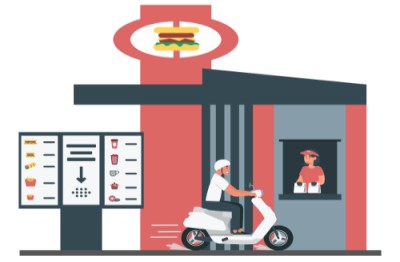COVID 19 and Its Impact on the Technology Sector
April 3, 2025
 COVID 19 and Its Impact on the Technology Sector
COVID 19 and Its Impact on the Technology Sector
In the past few years, technology companies have been driving the boom in the financial markets. The FAANG companies (Facebook, Amazon, Apple, Netflix, and Google) have seen their valuations increase by leaps and bounds. However, COVID-19 is causing a worldwide stock market collapse. It would be fair to say that the pandemic is not affecting…
 Crackdown on Indian Credit Rating Firms
Crackdown on Indian Credit Rating Firms
Credit rating industries are part of a closely held industry. For years, this has worked in favor of these agencies since they have to face less competition. However, these agencies are also the first ones to get blamed after every financial crisis. It is a known fact that no one can really predict a market…
 Can Credit Card Interest Rates be Capped?
Can Credit Card Interest Rates be Capped?
The American politics is heating up in anticipation of the 2020 Presidential Election. Democrats are unveiling what appears to be a populist socialistic agenda. Amongst the Democrats, Bernie Sanders, in particular, is hell-bent on enacting policies which can be considered to be socialist. Bernie Sanders has found an ally in Alexandria Ocasio-Cortez as she too…
Technology has started impacting all businesses. The restaurant business is no different. Earlier, restaurants used to be low tech and were businesses which were run by moms and pops. However, now restaurants have gone high tech.
Several innovations are now part of the restaurant model. The “Cloud-Kitchen” is one such innovation. In this article, we will have a closer look at what a cloud kitchen is. We will also look at the advantages and disadvantages of using this model.
Lastly, we will try to understand why this model has become the darling of venture capitalists worldwide.
A cloud kitchen is a restaurant that focuses exclusively on takeaways. These restaurants do not offer dine-in facilities. These outlets should be viewed as food factories. In these outlets, only the production of food happens.
The orders are only received online. Hence, the term “cloud kitchen” is used. The food is then sent to the customer in the form of a takeaway.
The cloud kitchen model has several advantages. Some of them have been listed below.
Also, the culture of going to restaurants is slowly fading away. Nowadays, both spouses are working.
Families want to spend their weekends in the comfort of their homes, away from the traffic as well as hustle-bustle. This is the reason why more than 35% of all meals from now restaurants are now delivered to the customer’s homes. The cloud kitchen model allows the restaurant to bypass expensive real estate costs and focus more on the food.
Cloud kitchens can keep the real estate costs low. This is because since customers never visit these kitchens, they do not need to be at prime locations. This allows the restaurants to cut costs. They can provide good quality food to the customers for a fraction of the costs.

Cloud kitchen companies have successfully automated all the packaging activities. These activities contribute to about 25% of the total workload. A lot of pre-preparation activities have also been fully automated.
Cloud kitchen startups are also trying to aggressively explore more technologies that will allow them to automate the entire operation.
Many of these customers buy daily from these kitchens. Hence, they are very concerned about the quality of inputs that are used since it directly impacts their health. This is the reason why cloud kitchens focus on food quality.
In fact, many of these kitchens have built their entire marketing programs around the promise of better quality food at the same or lower price.
The orders have to be received and communicated to the kitchen which is the nearest to the customer’s location. There are cloud-based solutions available which allow restaurants to go high tech without any major upfront costs. However, the monthly subscriber fee also burns a hole through the wallets of many startup kitchens. Hence, the costs end up being very similar to traditional restaurants. However, the number of the users is severely restricted since these outlets do not provide the dine-in facility.
Customers don’t really want to be served from prime real estate. However, any chosen kitchen needs to be hygienic so that the food is edible. There have been many cases reported on social media wherein the food served to customers was unhygienic.
To sum it up, the restaurant industry has undergone a major transformation. Cloud kitchens are a relatively new invention. However, they help serve a very important market niche which was earlier being neglected by traditional restaurants. As a result, they are not taking market share away from current restaurant owners. Instead, they are expanding existing markets thereby benefitting the industry as a whole.
Your email address will not be published. Required fields are marked *